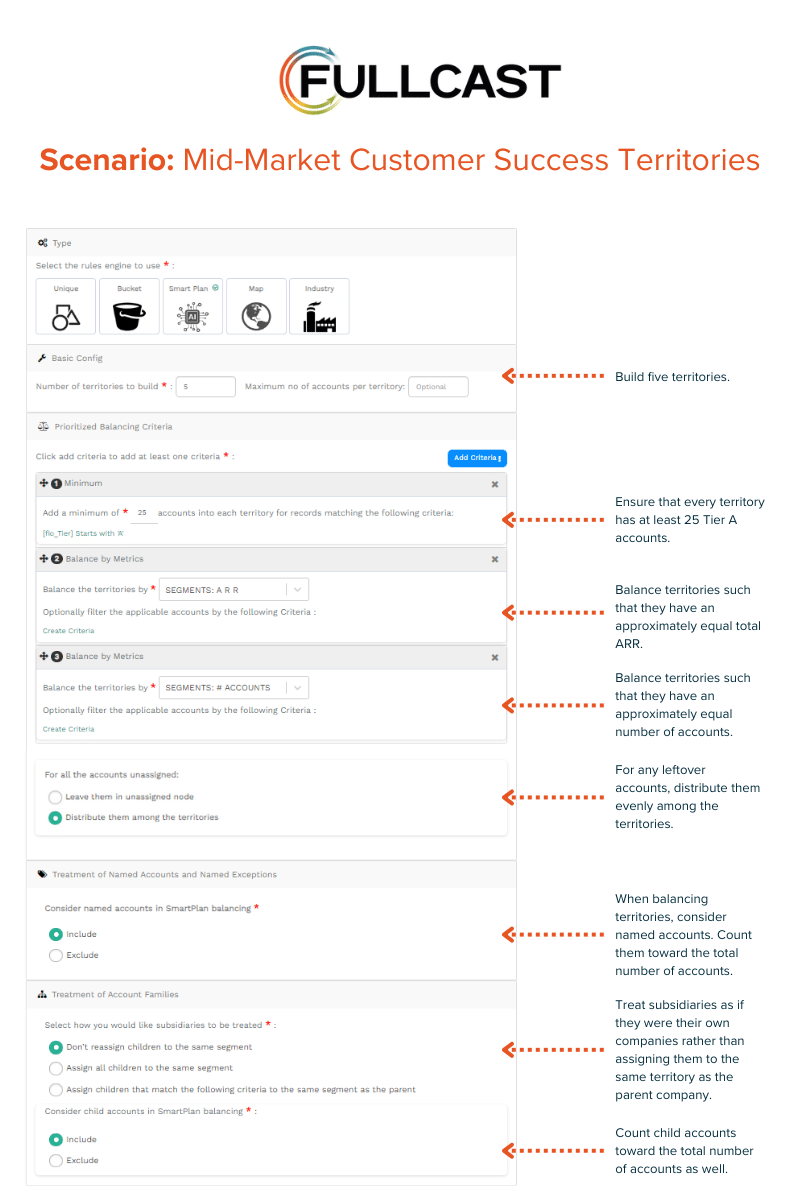Because acquiring a new customer is four to five times more expensive than retaining a current one, the importance of customer success (CS) has never been more important. To support the scalability of the CS function, there are now a plethora of CS tools that help automate insight-gathering and repetitive tasks.
Despite this, customer success manager (CSM) workloads are still pointed to as a cause for burnout and turnover. While automating repetitive tasks can increase efficiency, another critical lever for managing CS workload is account assignment. If you’re a CS or RevOps leader looking for strategic ways to meter and monitor your CS team’s workload, this blog will provide an understanding of how account assignment can bolster those efforts.
Why Is CSM Account Assignment Critical, and How Can CS Leaders Improve Their Approach?
The customer onboarding process has been pointed to as a key predictor of customer lifetime value (LTV). Tactically speaking, each new customer must get assigned to a CSM who has the bandwidth to provide a seamless onboarding experience.
This task of account assignment most often falls on a CS field manager or director. While it is often acknowledged that one key element of the people manager’s role is to ensure that each team member has the right amount of work, this process is especially difficult, as it requires careful attention to many factors. As a result, many managers rely on a combination of CSM-to-account ratios and gut intuition to determine how to assign accounts. For small teams, this can work very well. However, as a team scales, this level of review is not only a huge time burden but also potentially inequitable.
Territory Models in CSM Account Assignment
In sales, the territory strategy is an essential factor in business success, and understanding your customers is key to building a successful territory model. The main reason to apply a territory model lens to CSM account assignment is that it provides a mechanism for you to specify and weigh multiple factors. In fact, it can even force you to do the homework on what factors contribute to the most successful CSM account pairing and what customer characteristics contribute most to CSM workload.
“Having a territory model for customer success is crucial for providing the best experience to the customer,” points out Tyler Simons, head of customer success at Fullcast. “The ad hoc assignment typical in today’s world leads to delays in CSM assignment and imbalanced books of business for the CSMs, which all impact customers through delayed time to value or their favorite CSM leaving due to burnout.”
Best Practices for CS Territory Management
Here are five best practices for agile CS territory management which can help CS leaders optimize the alignment of CS resources to accounts.
1. Understand the criteria that most contribute to the amount of CSM bandwidth a customer consumes and the level of service you need to provide
Identifying the key factors that drive CSM workload—such as customer size, industry, or product complexity—can give you a more nuanced approach than relying on rough estimates of maximum accounts plus gut feel. One of the most common approaches is to use criteria such as the number of employees or contract value thresholds to approximate the time and level of attention that a customer will require.
However, this is not to say that there aren’t other ways to drive CSM workload. For example, perhaps you have found that the customer’s organizational structure plays a significant role in how much time your CSM will have to use. You may decide to introduce an account-level field such as “dedicated internal manager” to represent this factor. While this will require a detailed analysis of your current CSM’s workload and contributing factors, it can not only provide long-term value on account assignment but also ensure that your CSMs feel heard and understood.
2. Identify factors that contribute to successful CSM–account relationships
Beyond customer attributes, there may be internal factors that impact the effectiveness of a CSM–account pairing, such as language skills, industry expertise, or existing relationships. Identifying these can enhance your customer experience and introduce efficiencies for your CSMs.
One of the most common approaches is to segment customers based on industry. For example, public sectors, such as education and government, often have different needs and structures than private companies. Pairing a CSM with experience in government with public sector accounts can significantly enhance the customer experience.
3. Assign accounts to CSMs before the deal is done
The sales-to-CS handover is a critical part of the customer experience. If the decision on which CSM is going to take over an account gets made after the deal is done, you’ve just introduced a potential bottleneck into the customer journey.
In the best scenarios, you have a CS leader who is able to make a quick decision in a matter of days. At that point, time is still required for the sales rep to transfer knowledge to the CSM before the handover can be completed. This has the huge potential to leave your customer reliant on your internal processes to get the service they need. A better approach is to determine a point in the sales process to proactively assign accounts to CSMs. Perhaps you leverage your pipeline and forecasting metrics for the likelihood of closing as a trigger to begin making an account assignment decision.
4. Consider factors that support the efficiency of internal resources
One of the biggest mistakes a company can make in determining how to structure its teams is to prioritize internal processes over customer experience. In some areas, optimizing the internal processes can have a huge impact on the customer experience.
A prime example is attention to the alignment between sales and customer success. One way to do this is to minimize the number of sales reps that each CSM has to work with. If each CSM has fewer reps to work with, they can gain efficiency, such as less time spent on meetings. The ability to grow relationships among your internal teams can increase employee satisfaction, which has a huge impact on customer experience, as well.
5. Weigh all these factors in terms of priority and impact
With the various criteria to consider, it can be challenging to manually optimize CSM territories. Leveraging AI-enabled tools to factor in the priority of these criteria can allow you to create the most efficient and equitable territory assignments.
How Can Fullcast Help?
To see how these best practices can look in action, let’s explore a description of the criteria an organization might use for CS account assignments and how it would work in Fullcast. Let’s see how a company could translate its CS needs into discrete factors to use in balancing CSM territories, enabling agile account assignment.
First, it segments the globe according to the common four super-regions: AMER, APAC, EMEA, LATAM. Then, in AMER, it does the first cut based on the number of employees a customer account has, which creates the commercial, mid-market, and enterprise segments. From there, it carves CSM territories using different rules for each market segment.
If you are interested in learning more about how Fullcast can help CS teams balance workload, please reach out to get a customized demo.





















